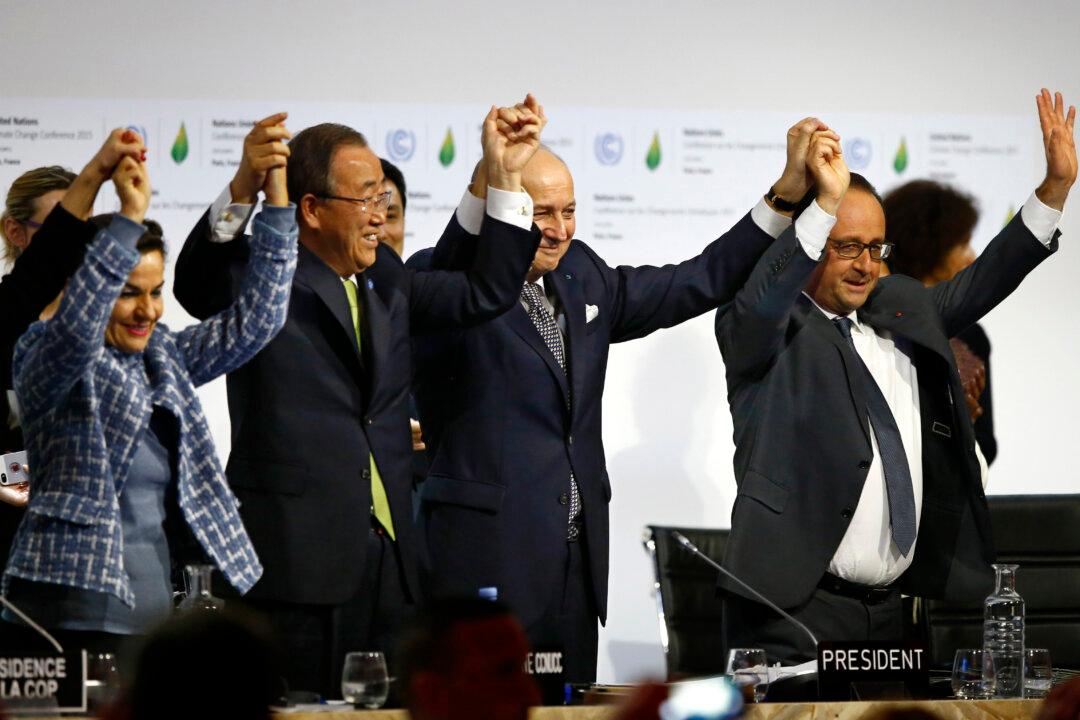UNITED NATIONS—About 160 countries are expected to sign the Paris Agreement on climate change Friday in a symbolic triumph for a landmark deal that once seemed unlikely but now appears on track to enter into force years ahead of schedule.
U.N. officials say the Friday will set a record for international diplomacy: Never before have so many countries inked an agreement on the first day of the signing period.
That could help pave the way for the pact to become effective long before the original 2020 deadline—possibly this year— though countries must first formally approve it through their domestic procedures.
“We are within striking distance of having the agreement start years earlier than anyone anticipated,” Brian Deese, an adviser to President Barack Obama, said in a speech last week at Reed College in Portland, Oregon.
The U.S. and China, which together account for nearly 40 percent of global emissions, have said they intend to formally join the agreement this year. It will enter into force once 55 countries representing at least 55 percent of global emissions have done so.
“There’s incredible momentum,” former New Zealand Prime Minister Helen Clark, who heads the U.N. Development Program, told The Associated Press. “We’re moving as quickly as possible to action.”
She said her agency is working with more than 140 countries on climate change-related issues, and that financing to make the Paris Agreement a reality is “critical, and let’s hope everyone lives up to commitments made.”






